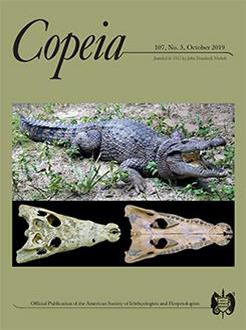The diet of lizards is associated with environmental variables, food availability, and morphological traits. This study evaluated the diet as well as sexual dimorphism in head structures and its relationship with prey volumes in males and females of two populations (Las Lagunas and El Oro, San Luis Potosí, Mexico) of the polymorphic Minor Lizard, Sceloporus minor. The diet is composed of 16 prey categories in addition to plant material. The family Formicidae, flying Formicidae, and the orders Coleoptera, Hemiptera, Lepidoptera, and Orthoptera represent the highest values of food importance by sex and population. In both populations, plant material was observed as part of the stomach contents. The results showed a high food niche overlap between sexes and populations, as well as low food niche amplitude. The Las Lagunas population showed sexual dimorphism in the dimensions of structures associated with the head, males being larger than females. However, the population from El Oro did not show sexual dimorphism in any of the variables analyzed. No correlation was found between prey volume and morphological variables associated with the head in either of the two populations. The results showed that the diet of the lizards in these two populations is similar to that recorded for other species of the genus. The lack of correlation between prey volume and head structures indicated that diet does not explain the presence or absence of sexual dimorphism in these populations. Therefore, it could be explained by other characteristics involved in sexual selection, such as color pattern, competition for territory, or the use of different microhabitats by the sexes. A large number of studies that analyze body shape, behavior, and use of microhabitat consider that temporal and spatial factors could help determine the reasons that contribute to ecological and morphological variations between populations of S. minor.
How to translate text using browser tools
2 October 2019
Feeding Ecology and Its Relationship with Head Structures in Two Populations of the Lizard Sceloporus minor (Squamata: Phrynosomatidae) from Northern Mexico
María Concepción Puga y Colmenares,
Aurelio Ramírez-Bautista,
Raciel Cruz-Elizalde,
Aaron García-Rosales,
Uriel Hernández-Salinas
ACCESS THE FULL ARTICLE





